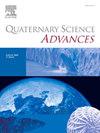Integrated litho-structural, hydro-geochemical, and numerical modeling analysis to characterize the 40 springs discharge system, Arba Minch, Ethiopia
IF 2.2
Q2 GEOGRAPHY, PHYSICAL
引用次数: 0
Abstract
The 40-spring discharge system (40SDS) in Arba Minch, Ethiopia, is significantly influenced by the complex geomorphology and tectonic activities of the Ethiopian Rift Valley. These springs are the major source of water supply for drinking, domestic use, and tourism, with historical discharge rates between 130 and 250 L per second (l/s). The study aimed to characterize the 40SDS through an integrated approach using litho-structural, hydro-geochemical, and numerical modeling techniques to understand the dynamics and continuing decline rate. The results showed that faults channelize groundwater from the western plateau through the escarpment to the rift floor, discharging into Lakes Abaya and Chamo. Hydro-geochemical analysis identified magnesium (Mg2⁺), calcium (Ca2⁺), and bicarbonate as dominant ions, reflecting interactions with silicate minerals, with concentrations increasing downstream due to water-rock contact. Numerical modeling indicated that the aquifer is highly sensitive to hydraulic conductivity, with 99.8% of groundwater outflow occurring through constant head boundaries. Recharge estimates from WetSpass ranged from 0 to 331.8 mm/year, with an average of 64.7 mm/year. A lag in rainfall-discharge correlation was noted, with a 1-month lag during wet seasons and a 2-month lag during dry seasons, linking recharge to western highland precipitation. Long-term data (1981–2015) indicates a continuous decline in mean annual flow due to reduced recharge and anthropogenic pressures. The springs exhibit a Ca-Na-HCO₃ water type, contrasting with nearby Mg-Na-HCO₃-Cl surface and groundwater. This decline threatens Arba Minch's socioeconomic stability, as these springs are the primary source of water for the community. Effective management strategies are crucial for the sustainable use of this essential resource.
综合岩石构造、水文地球化学和数值模拟分析表征埃塞俄比亚Arba Minch地区40个泉水排放系统
埃塞俄比亚Arba Minch地区的40泉流系统(40SDS)受埃塞俄比亚裂谷复杂地貌和构造活动的显著影响。这些泉水是饮用水、家庭用水和旅游用水的主要来源,历史排放率在130至250升/秒之间。该研究旨在通过岩石构造、水文地球化学和数值模拟技术的综合方法来表征40SDS,以了解动力学和持续下降速率。结果表明,断裂将西部高原的地下水通过断裂带引至裂谷底,流入阿巴亚湖和查莫湖。水文地球化学分析发现,镁(Mg2 +)、钙(Ca2 +)和碳酸氢盐是优势离子,反映了与硅酸盐矿物的相互作用,由于水岩接触,下游浓度增加。数值模拟表明,含水层对水力导流率高度敏感,99.8%的地下水通过恒定水头边界流出。wespass估算的补给量范围为0 ~ 331.8毫米/年,平均为64.7毫米/年。降雨-流量相关性存在滞后,雨季滞后1个月,旱季滞后2个月,将补给与西部高原降水联系起来。长期数据(1981-2015)表明,由于补给减少和人为压力,年平均流量持续下降。泉水表现为Ca-Na-HCO₃水类型,与附近的Mg-Na-HCO₃-Cl地表水和地下水形成对比。这种下降威胁着Arba Minch的社会经济稳定,因为这些泉水是社区的主要水源。有效的管理战略对可持续利用这一重要资源至关重要。
本文章由计算机程序翻译,如有差异,请以英文原文为准。
求助全文
约1分钟内获得全文
求助全文
来源期刊

Quaternary Science Advances
Earth and Planetary Sciences-Earth-Surface Processes
CiteScore
4.00
自引率
13.30%
发文量
16
审稿时长
61 days
 求助内容:
求助内容: 应助结果提醒方式:
应助结果提醒方式:


